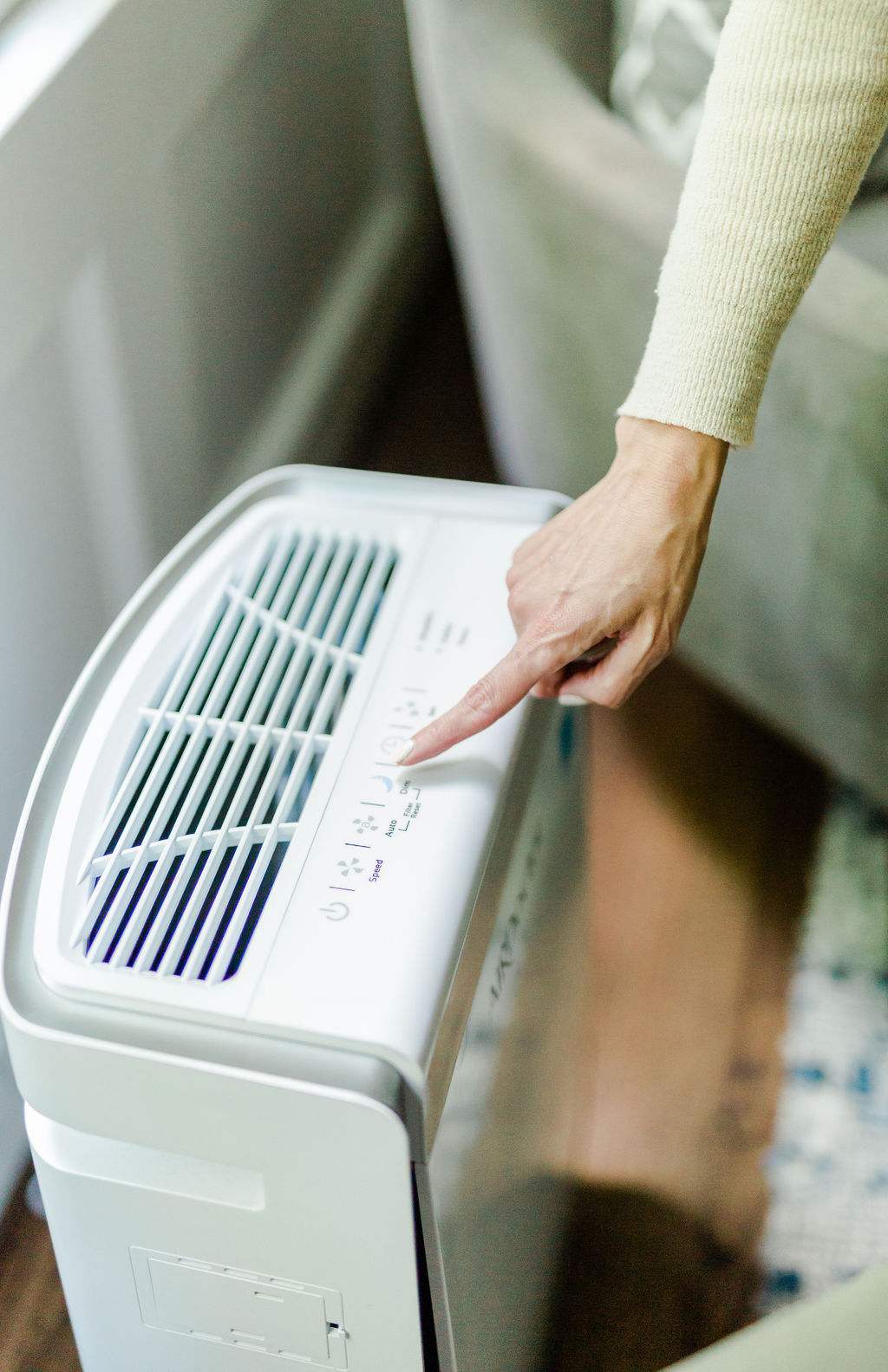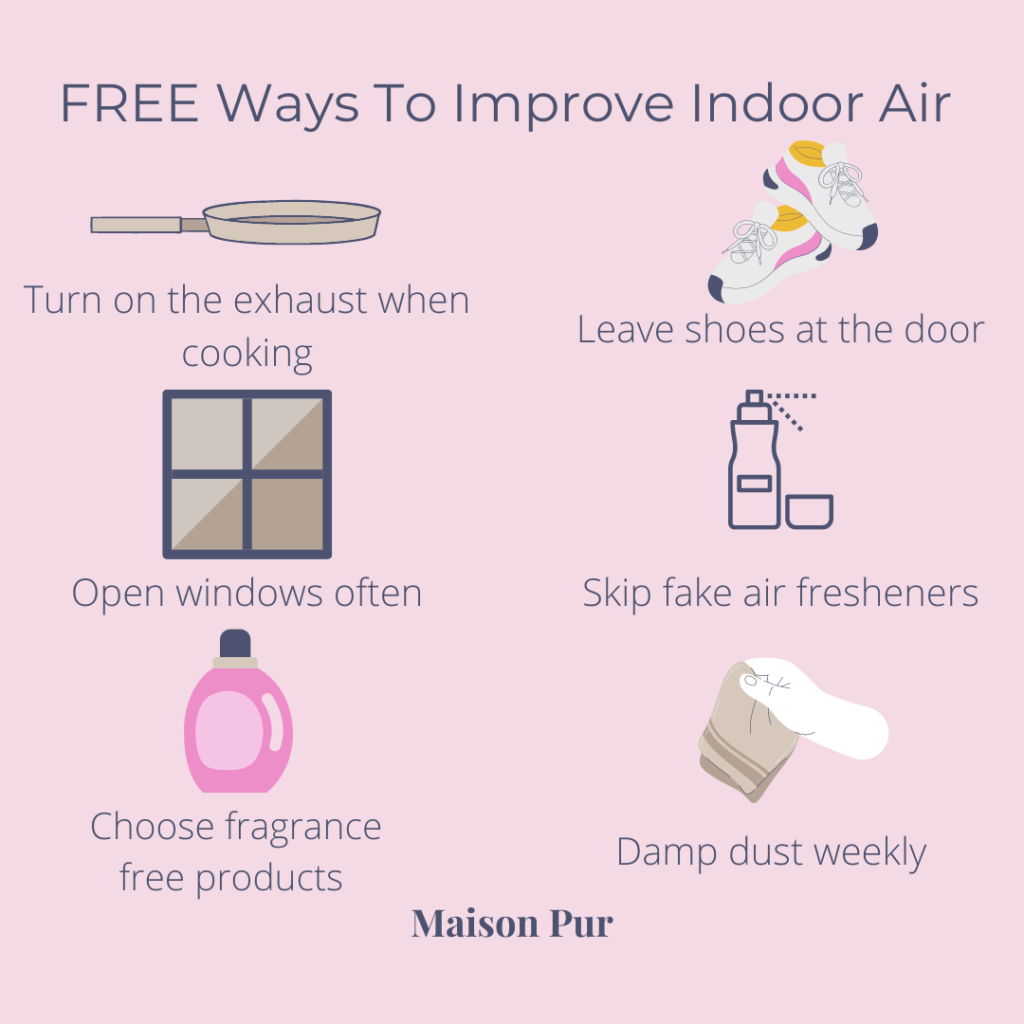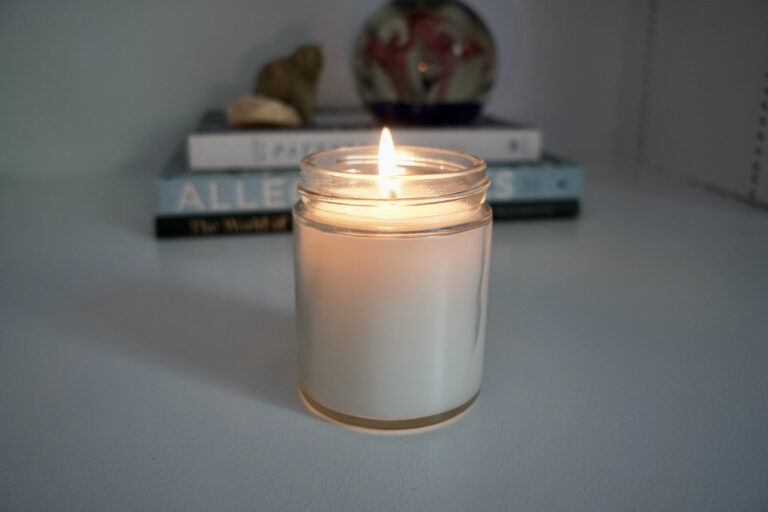Top 5 Ways to Improve Indoor Air Quality at Home

Indoor air quality (IAQ) is critical to your overall health and well-being. With more time spent indoors, ensuring the air you breathe is fresh and clean is essential. Poor air quality can cause various health issues, including allergies, respiratory problems, and fatigue. Fortunately, there are simple and effective (and some free!) ways to help. Below I’ll share the top 5 ways to improve indoor air quality and scroll down for a list of blog posts and podcast episodes with additional tips!
5 Ways to Improve Indoor Air Quality
photos by emmaloo.co
1. Keep Your Home Ventilated
Proper ventilation is crucial for maintaining indoor air quality. Without fresh air circulation, pollutants like dust, mold spores, and volatile organic compounds (VOCs) can build up in your living spaces.
- Open windows when weather permits to allow fresh air in and stale air out.
- Use exhaust fans in bathrooms and kitchens to remove moisture and odors. Especially while cooking.
- Install a whole-house ventilation system if you live in a particularly airtight home.
2. Invest in Air Purifiers
Air purifiers help remove airborne contaminants, such as dust, pet dander, mold spores, and VOCs. They are particularly helpful if you have allergies, asthma, or live in a polluted urban area.
- HEPA filters are highly effective at trapping fine particles.
- Consider activated carbon filters for removing odors and chemical pollutants.
- UV air purifiers can help destroy airborne bacteria and viruses.
I have a review of my favorite air purifier here (with a discount for you). Position air purifiers in the rooms you spend the most time in, such as bedrooms and living areas, for optimal effectiveness.
3. Avoid Artificial Fragrances
Artificial fragrances, found in air fresheners, candles, laundry detergents, and personal care products, can significantly contribute to poor indoor air quality. These synthetic fragrances often contain phthalates and other chemicals that can cause respiratory irritation, headaches, and even disrupt hormones over time.
- Avoid scented candles made from paraffin wax, which can release harmful chemicals when burned. Opt for natural beeswax or soy candles with essential oils for fragrance.
- Ditch air fresheners and sprays that contain synthetic chemicals. Instead, try diffusing essential oils or using natural potpourri to add a pleasant aroma.
- Choose fragrance-free or naturally scented household products to minimize exposure to potentially harmful chemicals.
By minimizing artificial fragrances, you’ll reduce the presence of unnecessary chemicals in your home and improve the overall quality of the air.
4. Keep Your Home Clean
Regular cleaning minimizes the build-up of dust, pet dander, and other indoor allergens that can compromise air quality.
- Vacuum frequently, especially if you have carpets, rugs, or pets. Use a vacuum cleaner with a HEPA filter.
- Dust surfaces with a damp cloth to prevent particles from becoming airborne.
- Wash bedding and curtains regularly, as they can collect allergens.
- Don’t forget to clean air ducts and vents, which can accumulate dust and debris.
- Take shoes off at the door to avoid tracking in VOCs, heavy metals, bacteria, and allergens.
5. Use Natural and Non-Toxic Cleaning Products
Many conventional cleaning products release harmful chemicals called VOCs into the air. These VOCs can cause respiratory irritation, headaches, and other health problems over time.
- Switch to natural cleaning products made from plant-based ingredients.
- Avoid synthetic air fresheners and opt for natural alternatives like essential oil diffusers.
- Choose low-VOC paints and furniture to prevent off-gassing of harmful substances.
Additionally, depending on where you live, you may want to keep humidity in check.
High humidity can lead to mold growth, while low humidity can cause respiratory discomfort and dry skin. Maintaining an optimal humidity level between 30% and 50% is essential.
- Dehumidifiers can help in areas with excess moisture like basements.
- Humidifiers are useful during winter months when indoor air can become too dry.
- Monitor humidity with a hygrometer to ensure levels stay balanced.
More Indoor Air Quality Resources
Blog Posts:
Podcast:
Creating A Healthy Home With Andrew Pace
Creating Healthier Living Spaces with Marilee Nelson
Improving indoor air quality doesn’t have to be complicated or expensive. By incorporating these strategies into your daily routine, you’ll create a healthier living environment for you and your family. Whether it’s adding an air purifier or simply keeping your home clean and well-ventilated, every step you take helps ensure the air you breathe is as clean as possible. For more tips, see our post on how to create a healthier home.
What steps have you taken to improve your indoor air quality? Share your thoughts and tips in the comments below!










One Comment